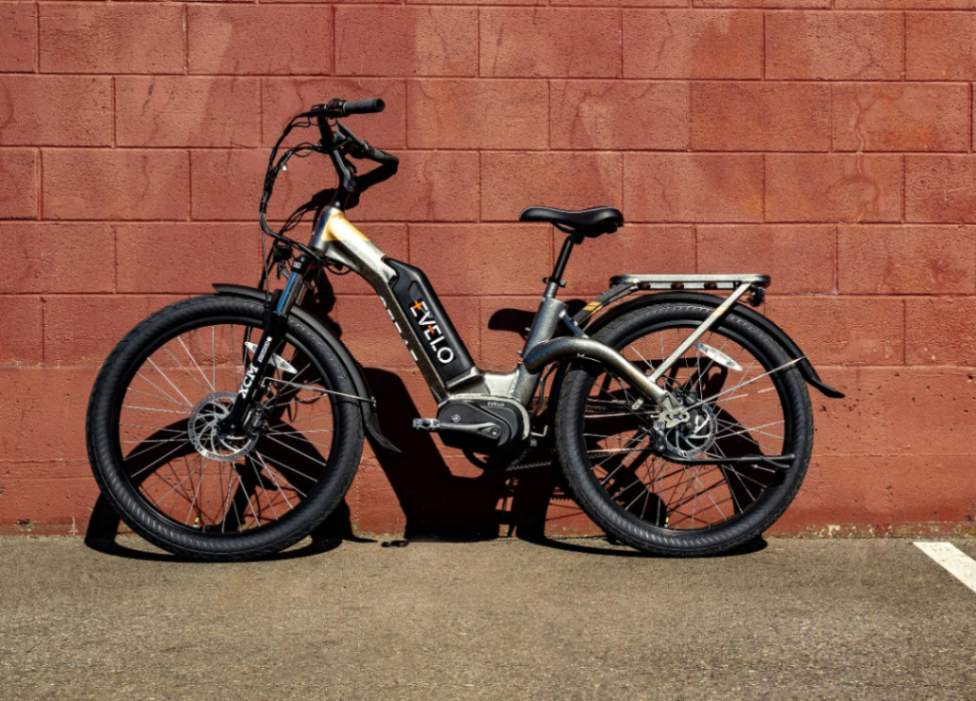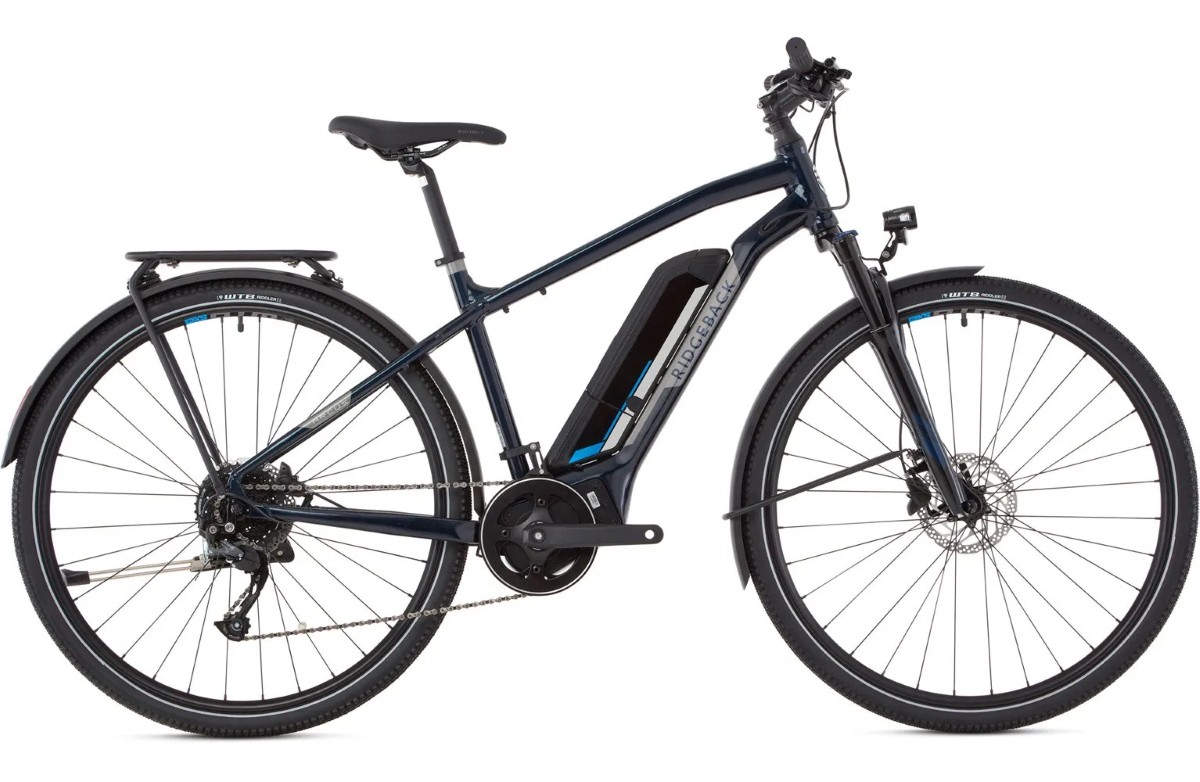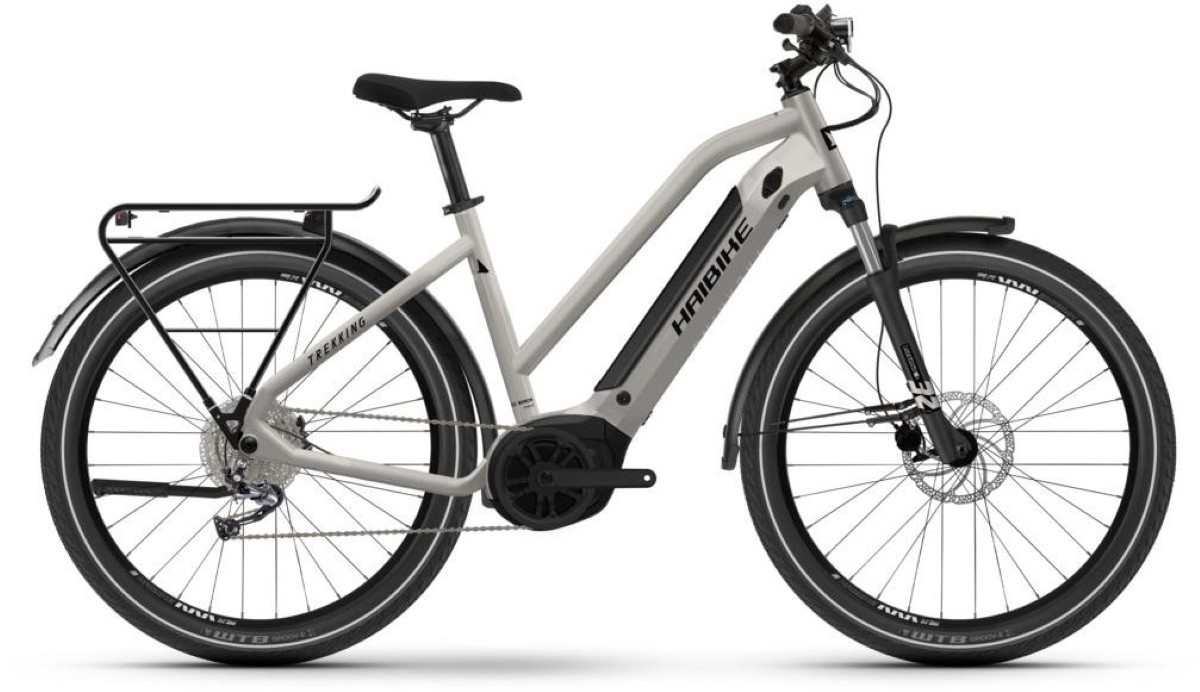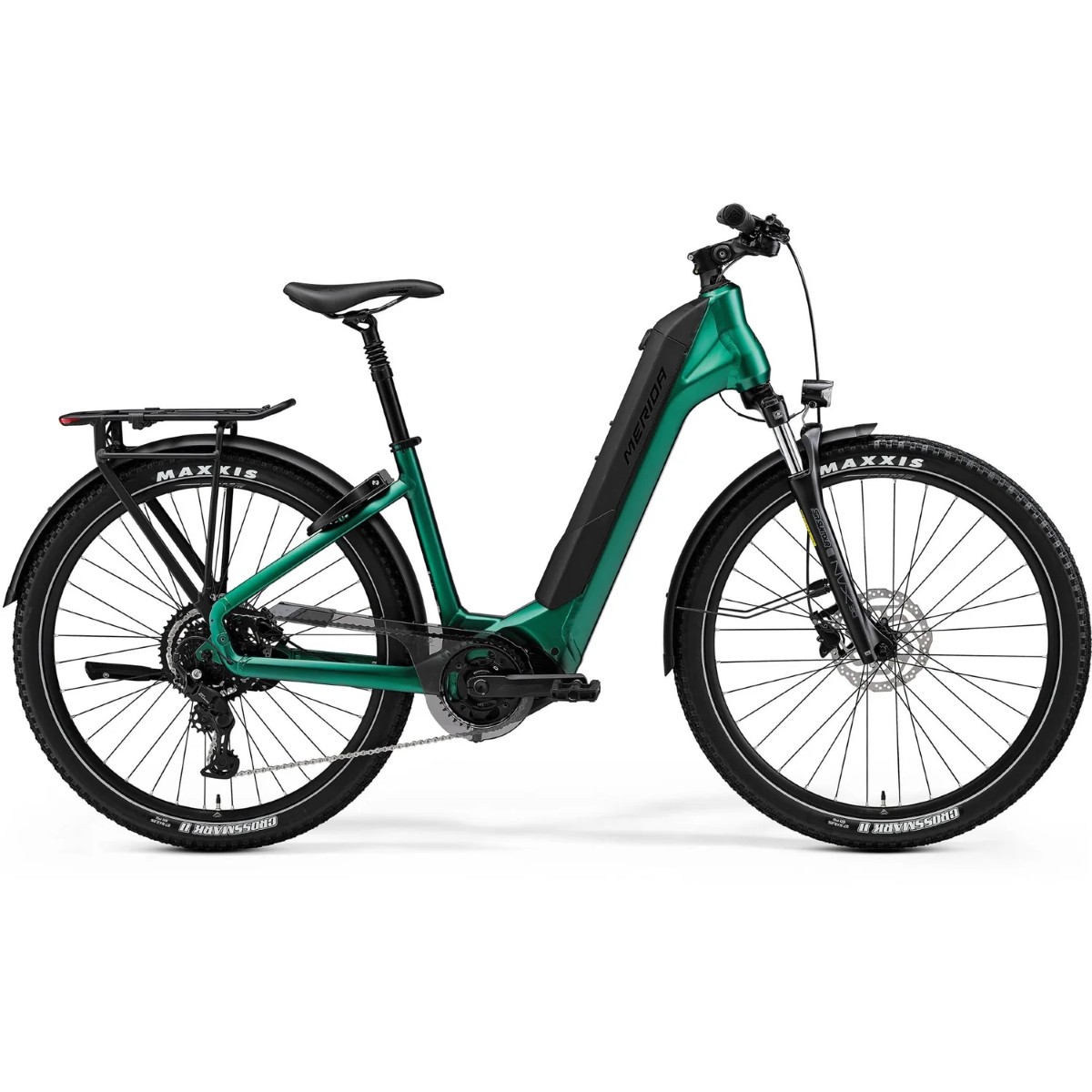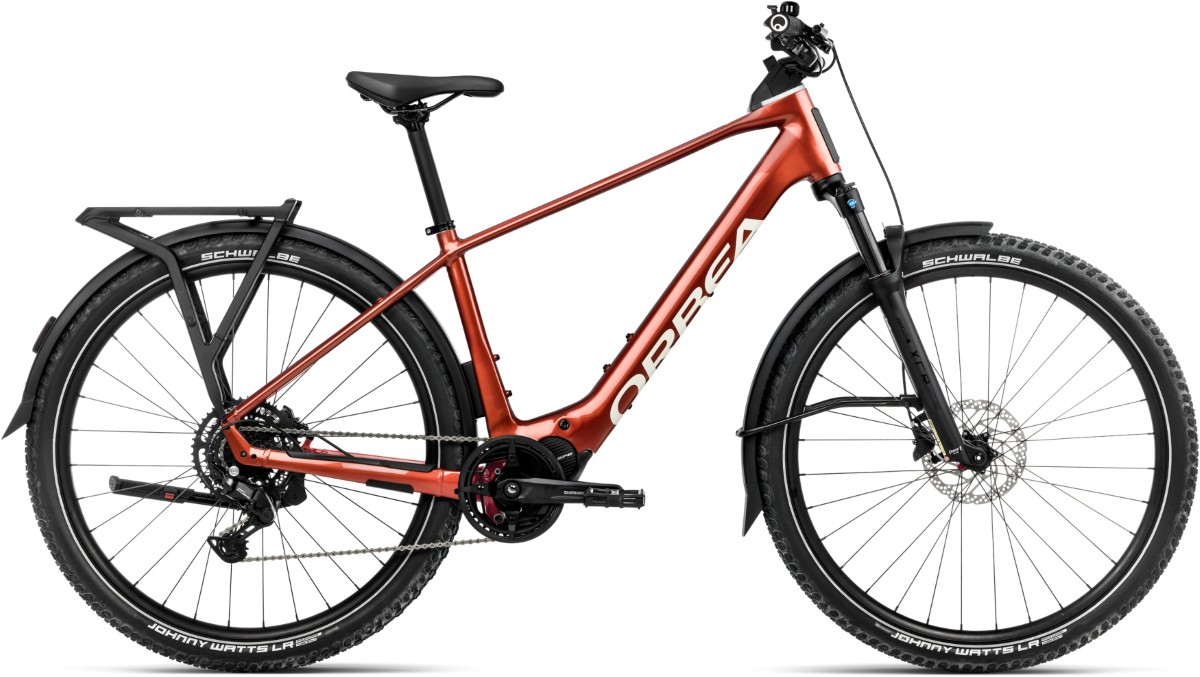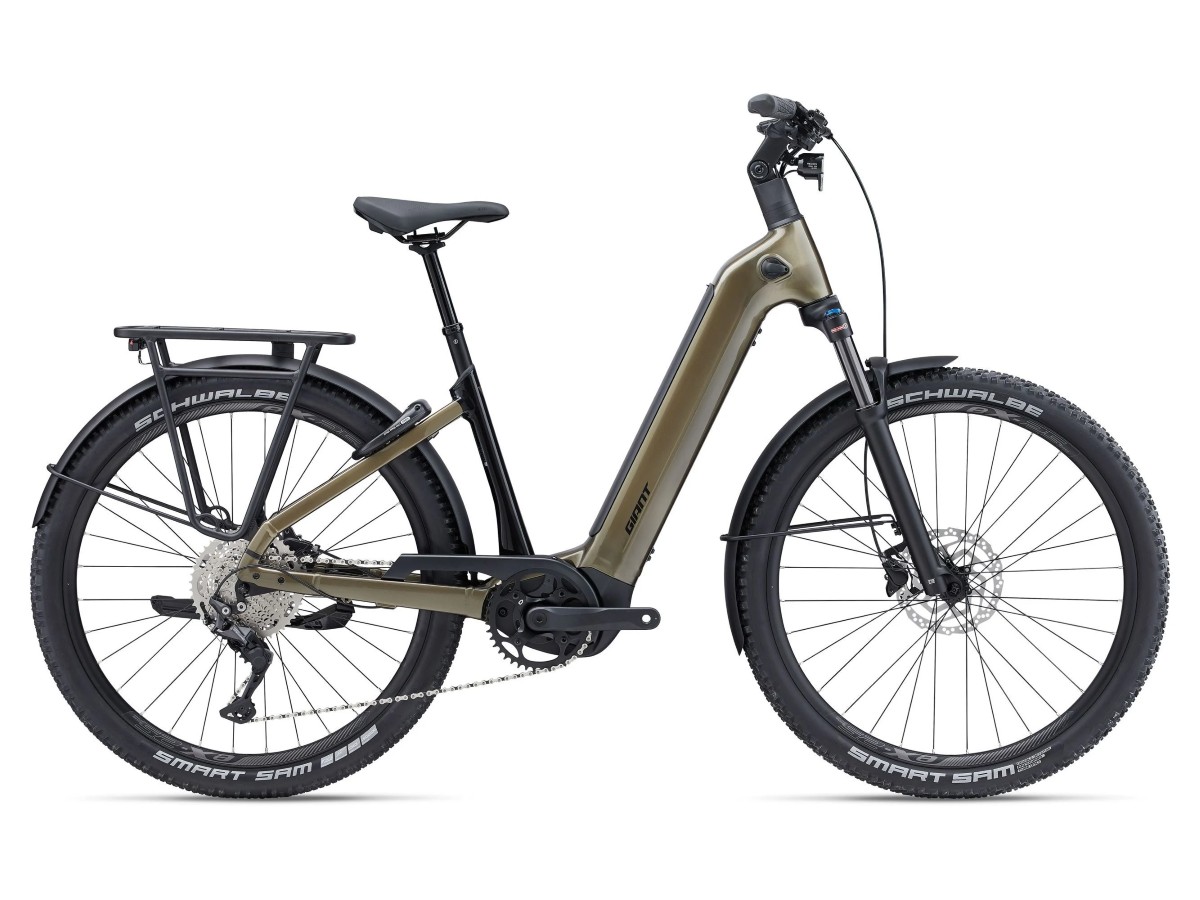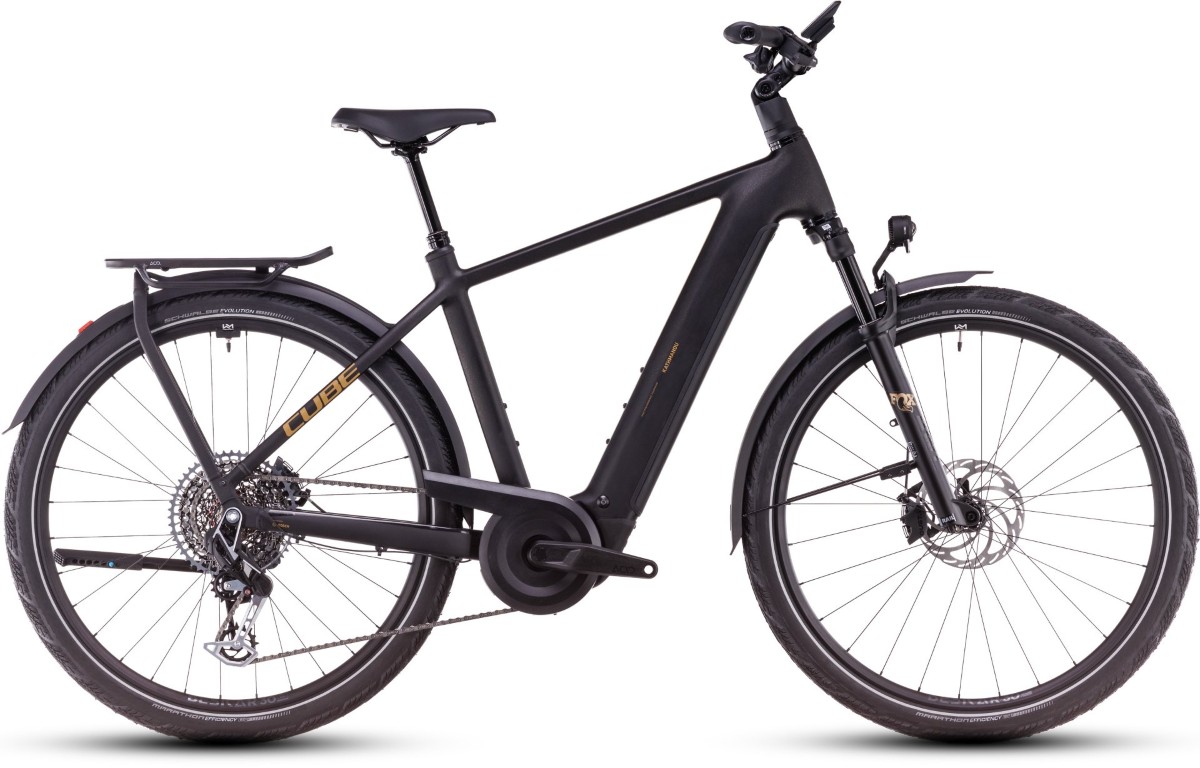Trekking e-bikes: Recommendations & buying advice
You've decided that a trekking electric bike is for you, so it's time to narrow things down further. In this guide we'll summarise the key points to look for based on your exact needs and make some recommendations.
Key takeaways
-
Trekking e-bikes are characterised by versatility thanks to a full set of practical accessories out of the box
-
Not sure what kind of e-bike you need? It's probably a trekking e-bike
-
Trekking e-bikes are the core of many manufacturers' ranges so there's lots of choice
We're fiercely committed to editorial independence. To fuel us to craft expert content we use affiliate links (*) through which we may receive commission.
Benefits of trekking e-bikes
Trekking e-bikes are the Swiss Army knives or Leatherman multi-tools of e-bikes - there are better tools for specific jobs but if you want to have just one tool, the trekking e-bike is likely to be it.
- Incredibly versatile, can turn their hand to shopping, commuting, the school run or just riding for fun
- Designed to be at home on well-surfaced roads as well as gravel tracks
- Hop-on-and-go practicality
Key features to look for
Frame
The vast majority of trekking e-bikes are built around aluminium frames. The main reason for this is that it's relatively easy for manufacturers to produce the complex shapes needed for mid-drive motor systems and integrated batteries in aluminium. Very cheap e-bikes with hub motors may still have steel frames, but approach with caution - the grades of steel found on very low-cost bikes tend to be heavy. At the other end of the scale there are a few trekking e-bikes with carbon fibre frames, a material more commonly associated with performance road and mountain e-bikes. Carbon fibre is very light and very strong, but also expensive and arguably overkill for an everyday all-round bike.
The key choice when it comes to trekking e-bike frames is the frame style. Given that electric trekking bikes are intended to be highly versatile, it's not surprising that manufacturers try to make them suit the widest range of riders. If you're reasonably agile or already a confident cyclist, then the conventional diamond frame with a high top tube will suit you. Alternatively, there are frames with dropped (or mid-height) top tubes that give a little more clearance - enough to be able to stand comfortably astride the bike with feet flat on the floor.
For ultimate ease of use, many trekking bikes are available with a step-through frame that doesn't have a top tube at all. These are very easy to get on and off and ideal if you find mounting a conventional bike difficult. In theory a frame with no top tube will twist and flex more than a conventional frame, but with the large tubes that come with integrated batteries (and the generally fairly undemanding riding style associated with trekking e-bikes) this isn't something that most people need to worry about.
Comfort
Trekking e-bikes are designed to cover healthy distances as well as short errands and commutes, so rider comfort is a key design consideration. A key apart of this is wheel and tyre choice, with most trekking bikes coming with high-volume (2in or wider) tyres for compliance on uneven surfaces. Most also come with a telescopic suspension fork containing a spring and damper to soak up bumps that the tyres can't deal with.
Some trekking e-bikes also feature a telescopic suspension seatpost as well, and well-padded saddles and shaped ergonomic handlebar grips are common too.
Motor
A mid-mounted motor is the norm for trekking e-bikes, allowing the motor to drive the rear wheel through the standard bike gears. This lets the motor work more efficiently and improves the balance of the bike by putting the weight of the motor low and central. This is particularly noticeable if you take advantage of the luggage-carrying ability of most trekking bikes.
Many bikes of this style have motors at the higher end of the torque range, making them suitable for tackling steep hills with a significant load such as you might find on a longer weekend leisure ride.
Find out more at our guide to e-bike motors.
Battery and range
Trekking e-bike batteries are usually generously sized in line with their goal of being capable of longer distances. 500Wh is a typical size, but you'll find examples of lower capacity (potentially a worthwhile weight saving if your useage is more weekday commuting than weekend expeditioning) and higher (potentially capable of multi-day tours). Choose based on your intended use.
Find out more in our guide to e-bike batteries.
Essential accessories
One of the defining characteristics of a trekking e-bike is the inclusion of several very practical accessories.
- Mudguards: For e-bikes that are intended to be ridden in all weathers, mudguards are a must. The best ones extend a long way around the wheel for maximum coverage. Look for secure, rattle-free mounts.
- Lights: A trekking e-bike is supposed to be a bike that you can ride anywhere, any time for any purpose, so lights are a must (especially since they're a legal requirement on the roads after dark). Most trekking e-bikes include front and rear LED lights powered from the main battery. They do vary a lot in brightness, though - some will provide enough light to navigate unlit lanes at night but others are more for being seen by other road users.
- Racks: Again, a rear luggage rack is an almost ubiquitous trekking e-bike feature. Do check their capacity though, as some are rated for heavier loads than others - a rack with 15kg capacity will be easily maxed out by, say, an occupied child seat.
- Kickstand: A kickstand saves you having to lean your e-bike up against something when parked. Most trekking e-bikes are designed with mounting points for a sturdy rear stand.
- Locks: Integrated locks aren't a universal feature of trekking e-bikes but they're not unusual. Typically they're a frame mounted unit with a bar that slides across to stop one wheel from rotating. That's enough to deter the opportunist from riding away on your bike, but really you're going to want to actually lock your e-bike to an immovable object too.
Our recommendations
Trekking bikes form the backbone of many manufacturers' e-bike ranges and there are lots to choose from. The following are just a handful that stand out for one reason or another - excellent value, high level of equipment, comfort and so on. We've split them into broad price categories so you can home in on something suitable.
Remember that most manufacturer's ranges are structured with different levels of equipment on the same frame, so if you like the look of a particular model here but it doesn't fit your budget there are likely to be very similar models for a little less and a little more money.
Under £2,500
What to expect
We consider somewhere around £1,500 to be the sensible entry level for a trekking e-bike. It's about the minimum you need to spend for properly functional components and a mid-drive motor system.
A bike much cheaper than that at full retail price will be significantly compromised in some way, with less effective hub motors, cable-operated rather than hydraulic brakes, heavier frame materials and unbranded components.
Ebco Adventure 3R
The Ebco Adventure 3R is a distinctly mountain bike-style take on the trekking genre but it clearly fits the bill - the tyres are large volume but with a shallow tread, blending comfort and road speed with the ability to tackle light off-road. Admittedly it's not as comprehensively equipped as some of the competition, with full mudguards and a kickstand included but luggage rack and lights being extra.
Despite that, it's impressive what Ebco has managed to deliver for £1,399. The Bafang mid-drive motor system has a useful 65Nm of torque and the 417Wh battery is fully integrated into the frame in a style more commonly associated with much more expensive e-bikes. One thing that you don't get is a telescopic suspension fork, with the Adventure 3R relying on a traditional rigid front fork. In some ways that's a bonus, though. At this price point a suspension fork is going to be a very basic unit that's likely to add a fair bit of weight but not that much comfort.
Pros
- A mid-drive motor and integrated battery at this price is remarkable
- Modern mountain bike-style looks
Cons
- Only three frame sizes available
- You'll need to budget for a rack and lights if you need them
Ridgeback Arcus 2
The term "trekking bike" is largely a European thing - UK manufacturers are more likely to refer to these crossover e-bikes as hybrids or, as Ridgeback has done, "all-terrain" bikes. The concept is the same, though - the practicality of mudguards, rack and lights for everyday use with the capability of exploring mellow off-road tracks and trails.
The Arcus 2 is impressive for its relatively low price, including a mid-drive motor that claims a hefty 90Nm of torque. Unsurprisingly, you're not getting a well-known Bosch or Shimano motor, but the Arucs's Sportdrive unit has a neat, sleek appearance that belies the budget price tag. We wouldn't expect a fully-integrated battery for this money, but the 418Wh battery sits quite neatly on the frame's down tube.
Most of the bikes we've highlighted here use the 650B (sometimes known as 27.5in) wheel size with high-volume tyres, but the Arcus 2 uses the larger traditional road bike size of 700C with narrower tyres - faster rolling but less comfortable. The Arcus 2 is also available with a step-through frame.
Pros
- Mid-drive motor for hub motor money
- Good level of equipment, including hydraulic disc brakes
Cons
- Low-volume tyres prioritise pace over comfort
- Narrow range of gears
Haibike Trekking 3 Mid
Haibike's Trekking 3 is a good example of the kind of trekking e-bike you can get for a little over £2,000. Most notably, this is where you can expect to see top brand motor systems like the Bosch Performance Line found here. You should definitely be getting a fully-integrated battery at this price point, and the Haibike delivers. You're also getting a full set of components from market leader Shimano.
It's worth noting that the Bosch battery charger puts out more current than the chargers that come with cheaper bikes, so you won't have to wait as long for a full charge of the 500Wh battery. The dropped top tube frame is a little easier to get on and off than a standard frame, although the Trekking 3 is also available with a conventional high top tube frame with the same specification at the same price.
Pros
- Choice of frame styles
- Top-brand parts from Bosch and Shimano
Cons
- Rear rack might need upgrading for really heavy loads
- Angular looks won't be to everyone's taste
£2,500 - £3,500
What to expect
This is the core price band for trekking e-bikes. You'll find motors from well-known brands like Bosch, distinctive frame designs, reliable parts and lots of choice. The top end of this price range is arguably something of a point of diminishing returns - beyond there you start paying a lot more for fairly marginal improvements.
Specialized Turbo Vado 4.0
This category of e-bike is most commonly associated with European manufacturers, but US-based Specialized has put the e-bike knowledge it's gained from mountain bikes into its own take on a versatile all-round e-bike. Specialized develops its own motor systems and the Turbo Vado delivers a useful 70Nm of torque. You may find yourself relying on that on hills as the range of gears available isn't as broad as some.
A generous 710Wh battery lives inside the frame. It's removable for charging but also lockable for security. As you'd expect for this kind of bike, all the key accessories - mudguards, LED lights, kickstand, luggage rack - are included. Specialized makes a big point about comfort on the Vado. The combination of large-volume tyres, a front suspension fork and a suspension seatpost takes the edge of surface irregularities.
Although Specialized pitches the Turbo Vado as a practical commuter/transport bike, the off-road capable tyres, comfort features and heavy-duty luggage rack (it's rated to 27kg) make it at home on longer leisure rides or even multi-day trips.
Pros
- Chunky tyres, suspension fork and seatpost add comfort
- Lots of extra security features like the lockable battery, app-based lockout and built-in alarm
Cons
- 9 speed transmission offers limited gear range
- You can find better quality parts for similar money elsewhere
Merida eSpresso CC 400
Merida has two sub-ranges of eSpresso, with this CC version fitting the all-rounder brief thanks to higher-volume tyres adding off-road capability over the more town-oriented regular eSpresso. The frame design is a striking modern interpretation of the traditional step-through design, making the eSpresso CC very easy to get on and off. Unlike some rivals, Merida only offers the step-through frame design. All the normal trekking bike accoutrements are present, there's even a built-in lock to go with the usual mudguards, lights, kickstand and luggage rack. The adjustable handlebar stem is a neat touch, allowing tuning of the riding position without having to replace parts.
The drive system is Shimano's EP6 with a sturdy 85Nm of torque, although be careful how you deploy it. This model has a relatively small 504Wh battery, significantly smaller than the batteries on the more expensive models in the same range.
Pros
- Potent Shimano drive system
- Accessible step-through frame design
Cons
- Notably budget gears and brakes considering the price of the bike
- Smaller battery compared to models higher up the range
Orbea Kemen ADV 30
At roughly the same price as the Merida eSpresso CC 400, the Orbea Kemen Adv 30 takes a distinctly different approach to the trekking bike genre. The Kemen comes very much from the mountain bike direction, with a smoothly-finished, low-slung frame and a little more suspension in the front fork. Orbea has also used big 29in wheels with high-volume tyres, giving a notably smoother ride than the Kemen's smaller-wheeled rivals.
Despite the mountain bike style, Orbea has addressed made the Kemen suitably practical with a rear rack, a kickstand, full mudguards and integrated lights. Orbea has used the Shimano EP600 motor with a sturdy 85Nm of torque. The 540Wh internal battery is on the small side but fine for day-to-day use. If you need more range at the weekend you can add a 252Wh external range extender battery for a roughly 50% increase in total capacity.
Pros
- 29in wheels and chunky tyres give a smooth ride on uneven surfaces
- Telescopic seatpost makes mounting and dismounting easy (or there's a dropped top tube version too)
Cons
- Needs the optional range extender to bring battery capacity up to some rivals
- Mountain bike looks may not be to everyone's tast
£3,500 and above
What to expect
In this price bracket you should be able to find compromise-free e-bikes with no weak areas in the specification. Expect top of the range components including low-maintenance wireless electronic gears, highly effective telescopic suspension forks;,reduced weight, higher battery capacities, sophisticated motor control systems, the option of carbon fibre frames and even trekking e-bikes with rear suspension for ultimate comfort and control.
Giant AnyTour X E+3
Like Specialized, Giant uses its own proprietary motors rather than relying on Bosch, Shimano or one of the other main suppliers. The SyncDrive Sport2 motor offers 75Nm of torque, in the middle of the range for this kind of bike. The control unit/display is very neatly integrated into the handlebar stem, a much more seamless look than the usual handlebar-mounted box. At 625Wh the battery offers decent capacity.
All of this is built into a sleek aluminium step-through frame kitted out with sturdy wheels and trail-ready knobbly tyres (but not so knobbly that they'll drag on the road). And of course all the key trekking bike ingredients are included. The frame even includes a mounting bolt for a trailer hitch.
Pros
- More prominent tyre tread than some of the competition, giving better grip on gravel or dirt
- Lots of component integration gives a smooth appearance
Cons
- 10 speed transmission puts the gears closer together rather than giving a wider gear range
- Only three frame sizes (although the step-through frame improves accessibility)
Cube Kathmandu Hybrid SLT 800
At this more elevated price points, Cube is able to deliver a high-quality component package. Most notably, you get electronic gears to go with your electric bike. Rather than the shift lever pulling a cable that moves the shifting mechanism, the SRAM AXS setup on the Kathmandu has a motorised mechanism (powered from the main e-bike battery) triggered by radio signals from the levers. It's super-fast, very accurate and low maintenance. The system also offers a really wide range of gears, allowing you to make the most of your (and the motor's) efforts.
The motor in question is a Bosch Performance Line CX with a beefy 85Nm of torque. For maximum range the Kathmandu has a substantial 800Wh battery in the downtube. The model pictured is the conventional diamond frame version but you can also choose a dropped top tube or a full step-through design.
While the Kathmandu SLT is expensive, it's also the top of the Kathmandu range - the SLX version has the same frame, fork, motor and battery but with mechanical rather than electronic gears for £1,000 less, and if you don't need as much range the entry level Kathmandu One is a considerably more affordablt £2,799.
Pros
- Wide-range electronic transmission
- Huge battery capacity
Cons
- Arguably into the point of diminishing returns
- Any colour you like as long as it's sparkly black
Scott Axis eRide FS10
Scott's Axis FS10 is unusual in a couple of ways. Most trekking bikes have a telescopic suspension fork at the front, but the Axis has suspension at the back too thanks to a concealed shock absorber inside the frame. The design is borrowed from one of Scott's electric mountain bikes - in fact, if you took the rack and mudguards off to make room for bigger, knobblier tyres, the Axis would make capable mountain bike itself. The suspension is here more for rider comfort than taking on extreme terrain, though. You can expect a smooth ride on the Axis over considerably bumpier surfaces than the gravel tracks that most trekking bikes can deal wth.
Also improving confidence for the rider is an anti-lock braking system at the front for safe, effective stopping. While experienced riders may actively dislike this, the target market for the Axis is likely to appreciate not worrying about going over the bars. The system comes from Bosch and is integrated with the CX motor system. The battery is a full-size 800Wh unit. All of this does add up to a 2-3kg weight penalty over the Axis's rivals, but if it's comfort and confidence you're after it may well fit the bill.
Pros
- Extraordinary levels of comfort
- Could be turned into a pretty capable mountain bike
Cons
- Tricky to imagine where 140mm of suspension travel is useful other than on a mountain bike
- Heavier than the competition
Buying tips
- Keep an eye out for seasonal offers, especially when a new model year is launched. Often the difference between one year's bike and the next is minimal (sometimes they're just a different colour) but the previous year's version is often discounted to make way for new stock.
- You can usually spread the cost of a trekking e-bike with finance deals - 0% finance is commonplace, so it won't cost you any more overall.
- Remember that you may be able to take advantage of the Cycle To Work tax exemption scheme if your employer offers it. Paying for an e-bike through salary sacrifice can substantially reduce the cost.
- Pay attention to warranties and after-sales support when making your choice. It will be easier to find someone to work on a Bosch or Shimano motor than some of the less well-known brands found on cheaper e-bikes.
- Look for manufacturer demo days or shows (including outdoor and leisure shows) for an opportunity for test rides.
Frequently asked questions
Are trekking e-bikes heavy?
Because trekking e-bikes include a full suite of practical accessories and usually have large (and somewhat robust) tyres as well as suspension forks and generous battery capacity, they're not the lightest e-bike option but that's the trade-off for practicality and versatility. As ever, the more you spend the lighter they get. If you don't need to carry your e-bike upstairs or load it onto a car rack then weight is less important.
What's the difference between a trekking e-bike and a hybrid e-bike?
Not much, really. They're both terms that apply to a bike that's a halfway house between an off-road specific mountain bike and a smooth-surfaces-only urban bike. European manufacturers tend to call them trekking bikes, UK and US manufacturers tend to call them hybrids. That said, the term "hybrid" is often applied to more stripped-down, performance oriented bikes without all the practical accoutrements of a trekking bike. Your best bet is to choose on features rather than what the manufacturer chooses to call it!
Can I go cycle touring on a trekking e-bike?
Absolutely! Trekking e-bikes are happy on a range of surfaces and are equipped to carry luggage out of the box. Add a pair of pannier bags and maybe a handlebar bag and you're good to go!
Summary
Trekking e-bikes are one of the more consistent e-bike categories - while bikes may vary in design and colour there's a common set of features. There are choices to be made in terms of frame style (conventional high top tube, mid top tube or step-through), range and budget but it's hard to go too far wrong in this category.

